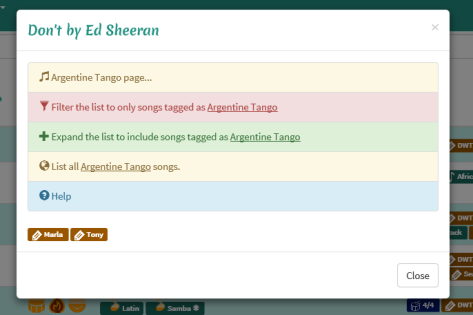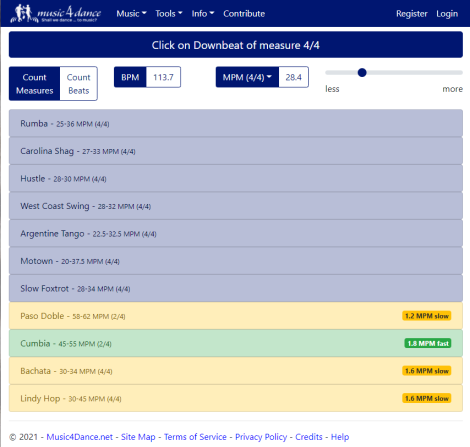The quick answer is to just click this link where you will find a list of over a thousand songs that have been labeled as Foxtrot.
But that’s definitely not the full answer. In that list you will find songs that are too fast or too slow for you to dance to because the Foxtrot is not just one dance style but a family of dances each of which can be danced to a different range of tempos.
When I first started dancing my teachers were from a background that was influenced by American Smooth style of Ballroom dance. So there was a very specific dance that I first learned as “The Foxtrot”. This is what is more precisely known as American Style Foxtrot and the was danced in the range of 30 measures per minute plus or minus a bit depending on competition rules.
In order to answer the more precise question of what kind of music will work for the dance that you are learning, it helps to get a bit of a historical perspective. The Foxtrot follows a pretty common pattern in how partner dances evolve. A style is first danced socially and pulls in moves from multiple traditions. Often something resembling the social dance is performed on stage by exhibition dancers as well. As the style becomes established, teachers take it and formalize it and possibly simplify it for their students. Then social dancers start pulling in things from different traditions and the dance evolves. Sometimes it gets renamed, and sometimes the dance with the same name is just danced differently depending on where and when a dancer learned the style. And never forget the influence of the music that is evolving alongside the dances, perhaps speeding up or slowing down or changing in character in a way that influences how dancers dance to it.
In the case of the Foxtrot, two of the early influences were Peabody and the Tango. The Peabody was a very fast “one step” dance, and the Tango was imported from Argentina via Paris. Harry Fox is the exhibition dancer who lent the Foxtrot his name. Vernon and Irene Castle are the teachers who first formalized the Foxtrot as well as using it in their performances.
Arthur Murray standardized the particular version of the Foxtrot that I learned. He also revived the Peabody as a competition dance to occupy the fast end of the Foxtrot style dances, as he felt that it was more reasonable for students to learn than the slightly slower but more complicated Quickstep.
At some point Charleston influences crept in as a style dance-able to faster music developed, called appropriately, the Quickstep.
To round out this family of dance styles I’ve adopted the name Castle Foxtrot to represent the slowest variations. Much of the music that I’ve cataloged as Castle Foxtrot has been labeled by others as Slow Dance, especially when it relates to Wedding Dances. Many of the moves that are used in Foxtrot can be slowed down and made to stay in place (or on spot) to create something that is much more elegant than the side to side swaying that I first “learned” as a slow dance.
Here is a snapshot of the Foxtrot filter of the music4dance Tempi Tool, as a jumping off point to help you find music in an appropriate tempo for your style of Foxtrot. Just click on any of the tempo ranges to get Foxtrot music in that range.
With the full tool on the music4dance site you can dig further into the relationship between dances and tempos.
Foxtrot was further complicated by the fact that it co-evolved very closely with swing and was often danced to the same music, or at least music played by the same bands. I’ll take at look at what I’ve been categorizing as the Swing family of dances next.
Does this categorization help you at all in how you think about dancing and how it relates to music. Is there a different way that you would slice and dice these dances?
One thing that I completely over-simplified in my description was the influence of regional traditions. Would anyone from around the world care to shed some light on your regional influences to the Foxtrot?
Useful Links:







